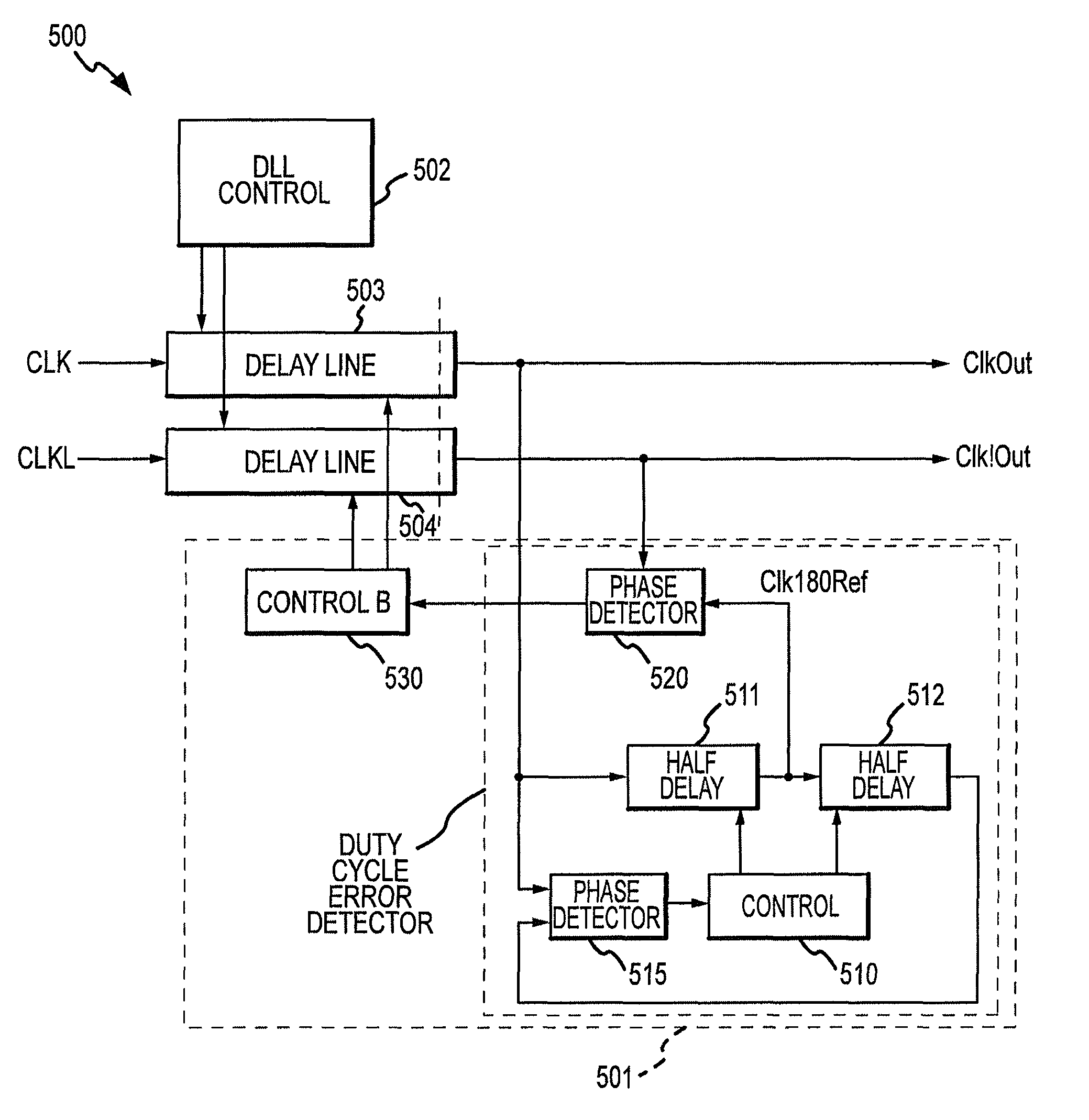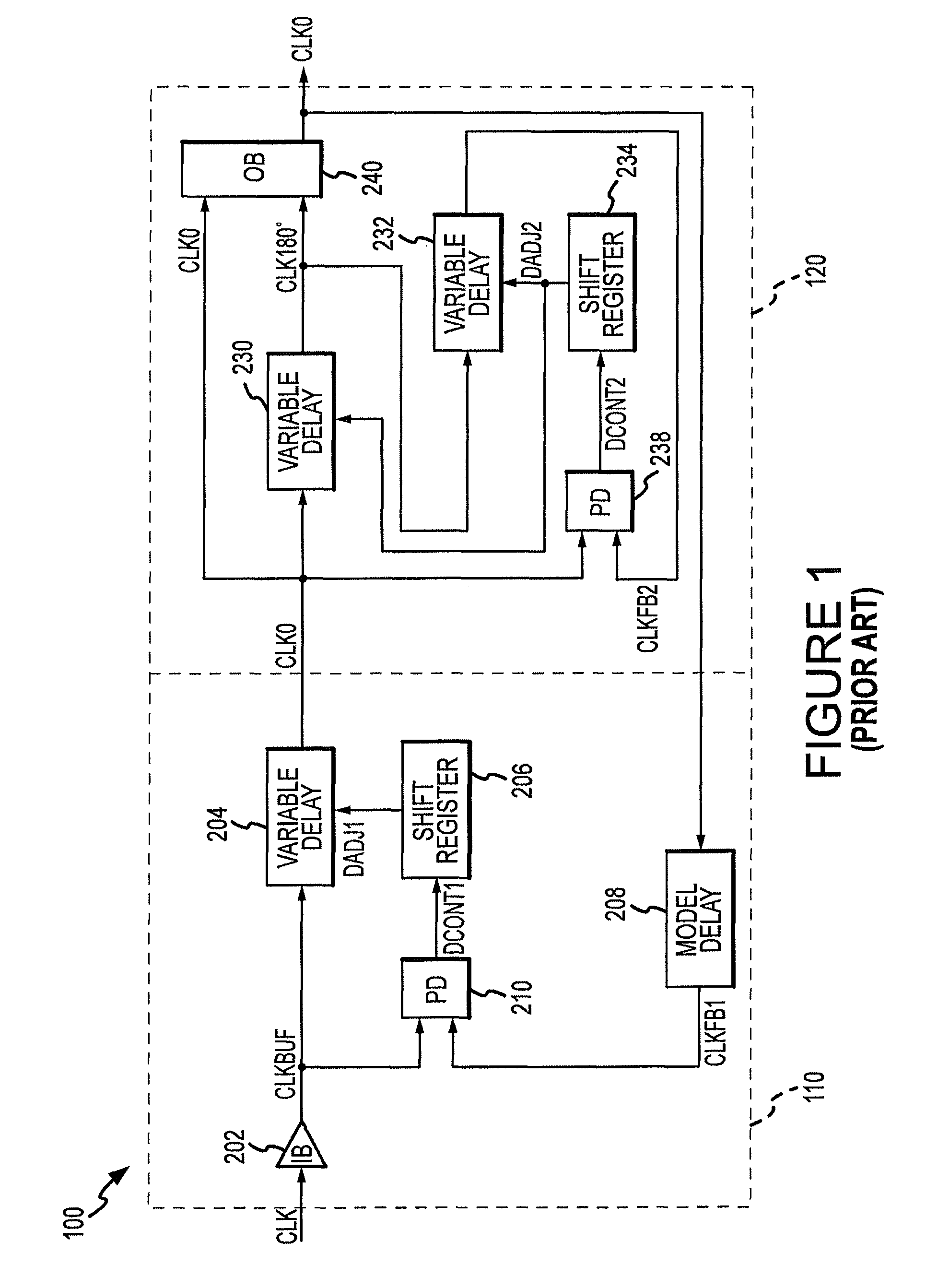Clock generator and methods using closed loop duty cycle correction
a technology of closed loop and clock generator, applied in pulse manipulation, instruments, pulse technique, etc., can solve the problems of affecting the validity of commands applied to the memory device, the internal clock signal to be phase shifted relative to the external clock signal, and the time delay introduced by the internal circuitry becoming more significan
- Summary
- Abstract
- Description
- Claims
- Application Information
AI Technical Summary
Benefits of technology
Problems solved by technology
Method used
Image
Examples
Embodiment Construction
[0031]One or more embodiments of the present invention provide clock generators configured to generate a duty cycle corrected output clock signal synchronized with a received input clock signal. The output clock signal can be duty corrected to achieve a particular duty cycle. One or more embodiments of the present invention provide DLL operation in parallel with duty-cycle corrector (DCC) operation and utilize closed-loop duty cycle correction. As shown in FIG. 4, DLL control 401 and DCC control 402 operate in parallel to adjust delay of a variable delay line 403 such that an output signal ClkSync is synchronized with an input signal ClkIn and has a corrected duty cycle. The DCC control 402 operates in a closed loop in that it receives the corrected output signal ClkSync as an input. The DLL control circuitry 401 adjusts the delay 403 such that an output clock signal, ClkSync is synchronized with an input clock signal ClkIn. The DCC control circuitry 402 detects a duty cycle error i...
PUM
 Login to View More
Login to View More Abstract
Description
Claims
Application Information
 Login to View More
Login to View More - R&D
- Intellectual Property
- Life Sciences
- Materials
- Tech Scout
- Unparalleled Data Quality
- Higher Quality Content
- 60% Fewer Hallucinations
Browse by: Latest US Patents, China's latest patents, Technical Efficacy Thesaurus, Application Domain, Technology Topic, Popular Technical Reports.
© 2025 PatSnap. All rights reserved.Legal|Privacy policy|Modern Slavery Act Transparency Statement|Sitemap|About US| Contact US: help@patsnap.com



